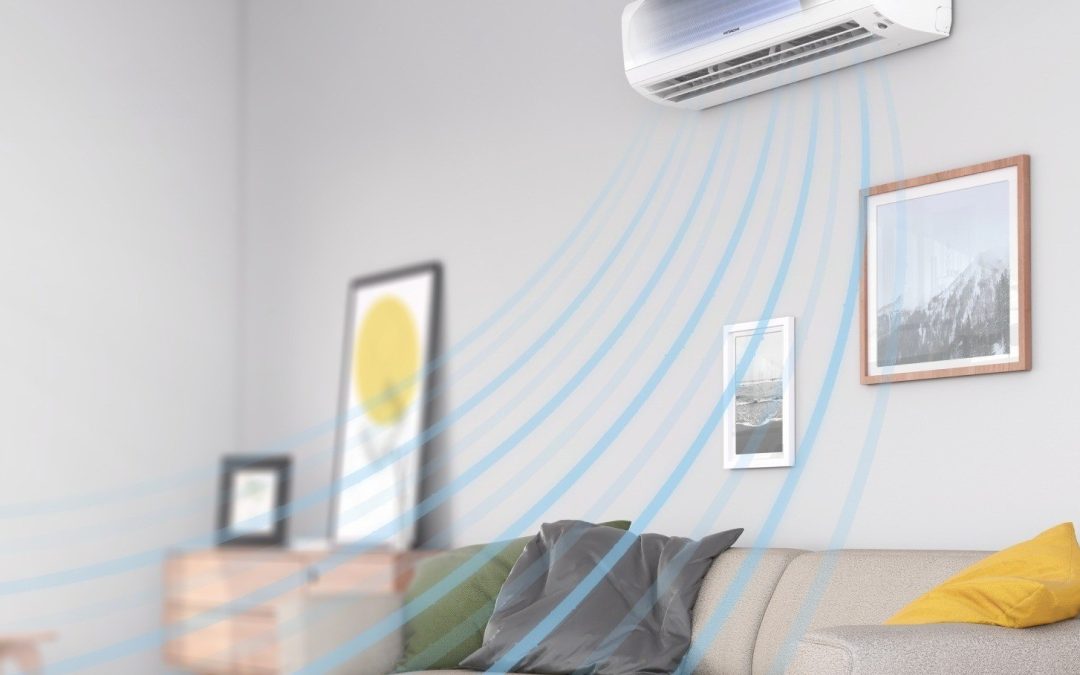The invention of air conditioning has revolutionized our modern lives, making it possible to escape the sweltering heat of summer and create comfortable indoor environments year-round. But have you ever wondered how Singapore air conditioning actually works?
At the heart of this modern technology is the basic refrigeration cycle, a thermodynamic process that allows for the transfer of heat and the creation of cool air. In this article, we will delve into the inner workings of Singapore air conditioning and explore the fundamental principles of the basic refrigeration cycle.
Process of Aircon Refrigeration Cycle:
The basic refrigeration cycle is a thermodynamic process that involves the transfer of heat from a low-temperature region to a high-temperature region, using a refrigerant as a medium. A refrigerant is a special type of fluid that has unique properties, such as low boiling and condensing points, which make it suitable for heat transfer applications.
The four main components of the basic refrigeration cycle are the evaporator, compressor, condenser, and expansion valve. These components work in harmony to create a continuous cycle of heat transfer, resulting in the cooling effect we experience in air conditioning.
1. Compressor:
The process begins with the compressor, which is typically located outside the building or home. The compressor is responsible for increasing the pressure and temperature of the refrigerant gas.
The refrigerant, which is a special type of fluid with unique thermodynamic properties, is chosen for its ability to absorb and release heat as it undergoes changes in pressure and temperature. As the refrigerant gas is compressed, its temperature rises, and it becomes a high-pressure, high-temperature gas.
2. Condenser:
Next, the high-pressure, high-temperature refrigerant gas flows into the condenser, which is also located outside the building or home. The condenser is a heat exchanger that is responsible for releasing the heat absorbed by the refrigerant gas during compression.
As the refrigerant gas flows through the condenser coils, it is cooled by the surrounding air or water, depending on the type of condenser used. This causes the refrigerant gas to condense into a high-pressure, high-temperature liquid.
3. Evaporator:
The high-pressure, high-temperature liquid refrigerant then moves into the evaporator, which is typically located inside the building or home. The evaporator is also a heat exchanger, but its function is to absorb heat from the surrounding air to cool the space.
As the liquid refrigerant enters the evaporator coils, its pressure is reduced, causing it to rapidly expand and evaporate. This change in state from liquid to gas absorbs heat from the surrounding air, lowering the temperature of the air. The cooled air is then blown into the space through a fan, creating a comfortable indoor environment.
4. Back to Compressor:
Finally, the low-pressure, low-temperature refrigerant gas returns to the compressor to complete the cycle. The refrigerant gas is drawn back into the compressor, where it is compressed again to restart the process. This continuous cycle allows for the continuous transfer of heat, resulting in the sustained cooling of the indoor space.
A Critical Component – Expansion Valve
One critical component of the basic refrigeration cycle is the expansion valve, also known as the throttling valve. The expansion valve is responsible for reducing the pressure of the refrigerant, which causes it to expand and evaporate in the evaporator.
This reduction in pressure is what allows the refrigerant to absorb heat from the surrounding air and cool the indoor space. The expansion valve acts as a metering device, controlling the flow of refrigerant and regulating the system’s overall efficiency. It’s important to note that air conditioning systems are closed systems, meaning that the refrigerant is continuously circulated and does not get consumed or released into the atmosphere.
The same refrigerant is used repeatedly in the cycle, making air conditioning systems environmentally friendly and energy-efficient when properly maintained. In addition to the basic refrigeration cycle, air conditioning systems can also incorporate additional components to enhance their performance and efficiency. For example, many systems use a blower or fan to circulate the air and distribute the cooled air throughout the space.
The Importance of Refrigerants in the Air Conditioning Cycle:
The refrigerant is a crucial component of the air conditioning refrigeration cycle. It is responsible for absorbing and releasing heat, which is what allows the air conditioning system to cool the surrounding air. Commonly used refrigerants in air conditioning systems include hydrofluorocarbons (HFCs) such as R-410A and R-134a, as well as chlorofluorocarbons (CFCs) such as R-22.
However, due to their environmental impact, particularly on climate change and ozone depletion, many countries are phasing out the use of CFCs and transitioning to more environmentally friendly refrigerants.
· System Performance and Safety:
The choice of refrigerant also affects the overall performance and safety of the air conditioning system. Proper selection and use of refrigerants that are compatible with the system components, such as compressors, condensers, and evaporators, are essential to ensure optimal performance.
It is also important to avoid potential issues such as system inefficiencies, reduced cooling capacity, and equipment failure. Additionally, the safe handling, storage, and disposal of refrigerants are important to prevent risks associated with toxicity, flammability, and environmental contamination.
Copper Pipe and Insulation for Air Conditioner:
The connection between the inside and outside units of an air conditioner is made using copper pipes. The copper piping system connects the interior and exterior units, where the refrigerant is pumped to remove the room’s heat.
The refrigerant inside the copper tubing between the condenser and the evaporator is at a very low temperature. Therefore, it is important to insulate the copper pipes to stop energy loss (or cold loss) and maintain the air conditioner’s effectiveness.
In addition, insulation keeps condensation from accumulating around the copper pipes, which can lead to the formation of water droplets. As a result, we can stop the water from dripping. The connection between an air conditioner’s indoor and exterior units is often made out of copper piping. Compared to copper, no alternative is preferable.


